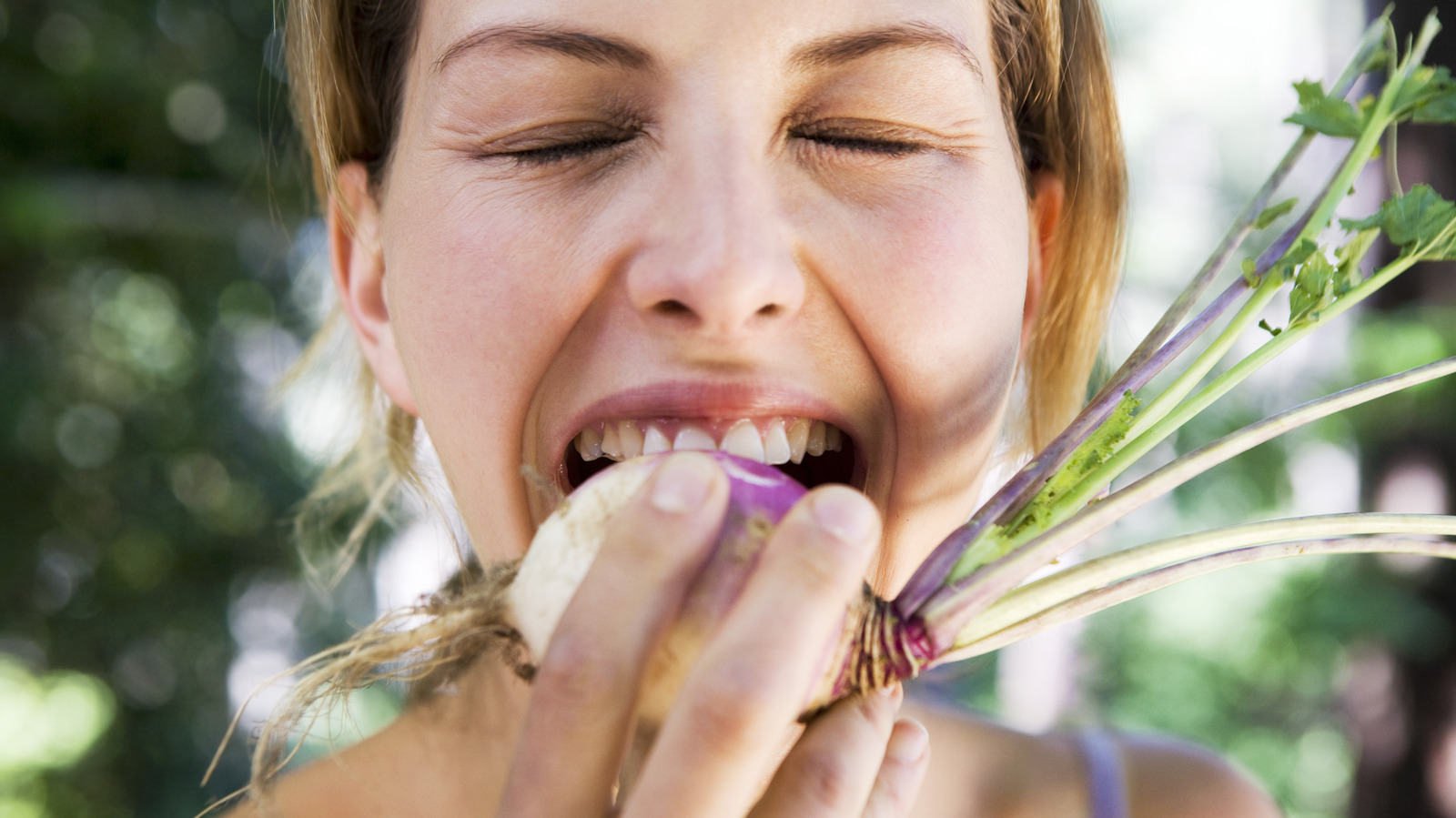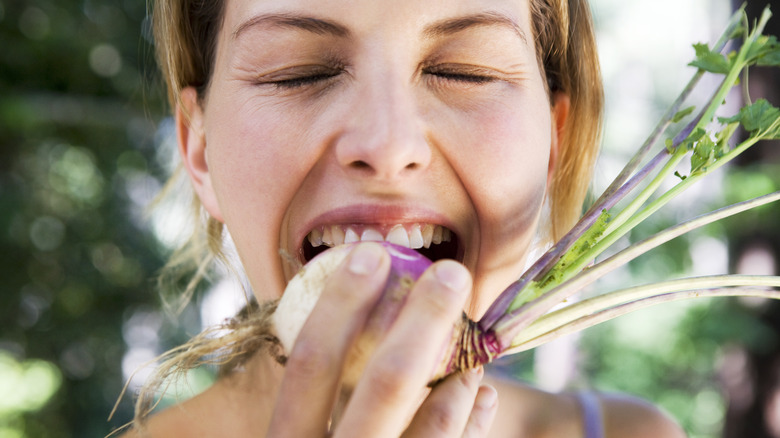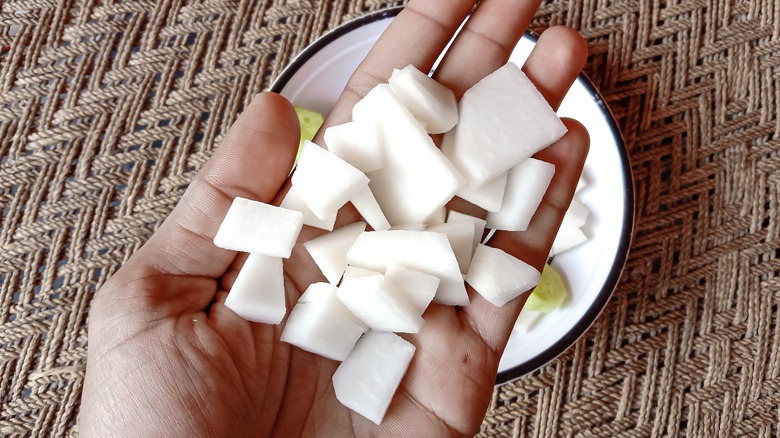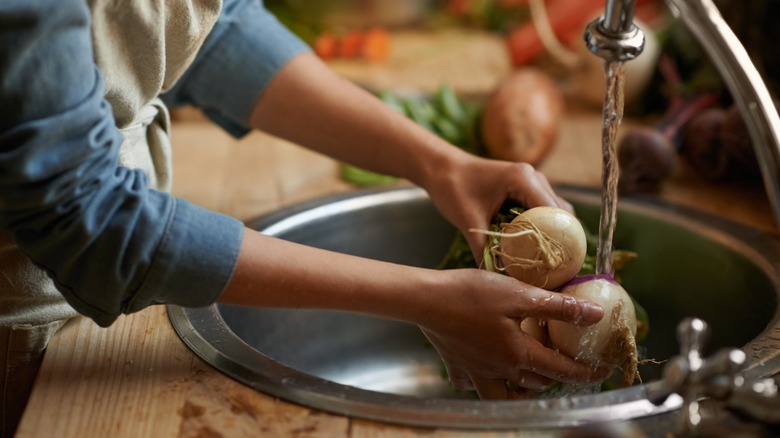
The Unpopular Vegetable That Can Lower High Cholesterol And Blood Pressure At The Same Time – Health Digest
Poor turnips. They’re the least favorite vegetable of Americans, according to a Fox News report from 2019. It cited the findings of a 2,000-participant poll that evaluated which vegetables people liked best. Unfortunately, 27% of the poll’s respondents gave turnips the thumbs down. But before you decide to pass by the bin of turnips on your next shopping trip, think again. Turnips might not be able to win popularity contests, but they may be worth adding to your diet, especially if you’re trying to lower your cholesterol and blood pressure levels.
Figures from the U.S. Department of Agriculture show that a single medium-sized turnip contains 233 milligrams of potassium, 25.6 milligrams of vitamin C, and 36.6 milligrams of calcium. Those are relatively impressive numbers, particularly when you consider that the U.S. Food and Drug Administration recommends adults take in 4,700 milligrams of potassium, 90 milligrams of vitamin C, and 1,300 milligrams of calcium daily. Essentially, one turnip could supply an average adult with about 5% of the potassium, 28% of the vitamin C, and 3% of the calcium they need for the day. That’s not bad for approximately 34 calories.
Which of those nutrients plays the biggest part in keeping cholesterol and blood pressure in check? It’s potassium.
Potassium-rich foods for a low cholesterol diet
Although the link between potassium and lower cholesterol isn’t entirely understood, WebMD notes that potassium is frequently considered an important part of a heart-healthy diet. Because low-cholesterol diets tend to include high-potassium foods, all nutritionally valuable foods that offer quite a bit of potassium (like turnips) are probably worth trying for people who want to reduce their cholesterol.
Further, in a 2018 National Institutes of Health (NIH) MedlinePlus Magazine article, the authors noted the advantages of potassium as a potential way to prevent cardiovascular disease. Potassium was named for its alleged ability to help avoid hardening of the arteries, per a 2017 NIH study that was conducted on mice. To clarify, the original NIH piece did mention that potassium wasn’t necessarily right for all individuals, such as those with kidney issues. However, potassium was seen as mostly beneficial for adults who were in generally good health.
Bringing down blood pressure with potassium-heavy foods
In terms of reducing high blood pressure with potassium, the correlation is better documented. For instance, a chapter from a 2021 issue of Advances in Food and Nutrition research suggests that there is a negative correlation between potassium and blood pressure. That is, when consumption of potassium is high, associated blood pressure readings tend to be low. A review in a 2019 edition of Hypertension points to the potential of using potassium-enhanced salt alternatives for people with hypertension. As the authors wrote, “There is empirical evidence that replacement of sodium chloride with potassium-enriched salt substitutes lowers systolic and diastolic blood pressure.”
Another study from 2024 (via Clinical Hypertension) further explored how potassium worked to reduce blood pressure. The researchers concluded that a significant part of potassium’s hypertension-fighting power came from its known ability to help the body excrete excess sodium. Without an overabundance of sodium, people with elevated blood pressure were sometimes able to reduce their numbers naturally. The authors noted the results of an earlier study that showed potassium intake to be “an important independent determinant of blood pressure, independent from sodium intake.”
Ways to sneak turnips into your regular diet
Of course, knowing that your body might benefit from turnips and incorporating them into your weekly meals are two very different things. It can be challenging to know how to include a new-to-you ingredient into your favorite recipes. However, you can master the art of preparing turnips without too much effort.
First, be aware that since turnips are a root vegetable, you can swap them for other root vegetables in stews, soups, and casseroles. Just keep in mind that turnips may taste peppery, according to Medical News Today. Therefore, you may want to experiment slowly. As an example, you could transform your mashed potatoes with half potatoes and half turnips rather than moving to all turnips. Secondly, remember that you can eat both the roots and the greens on turnips. A WebMD article recommends sautéing turnip greens in place of other greens like collard greens. Finally, take Healthline’s advice to test turnips in the raw. After removing their outermost layer, grate them finely as an addition to salads or slaws to mix up your usual fare and give your system a potassium boost.






